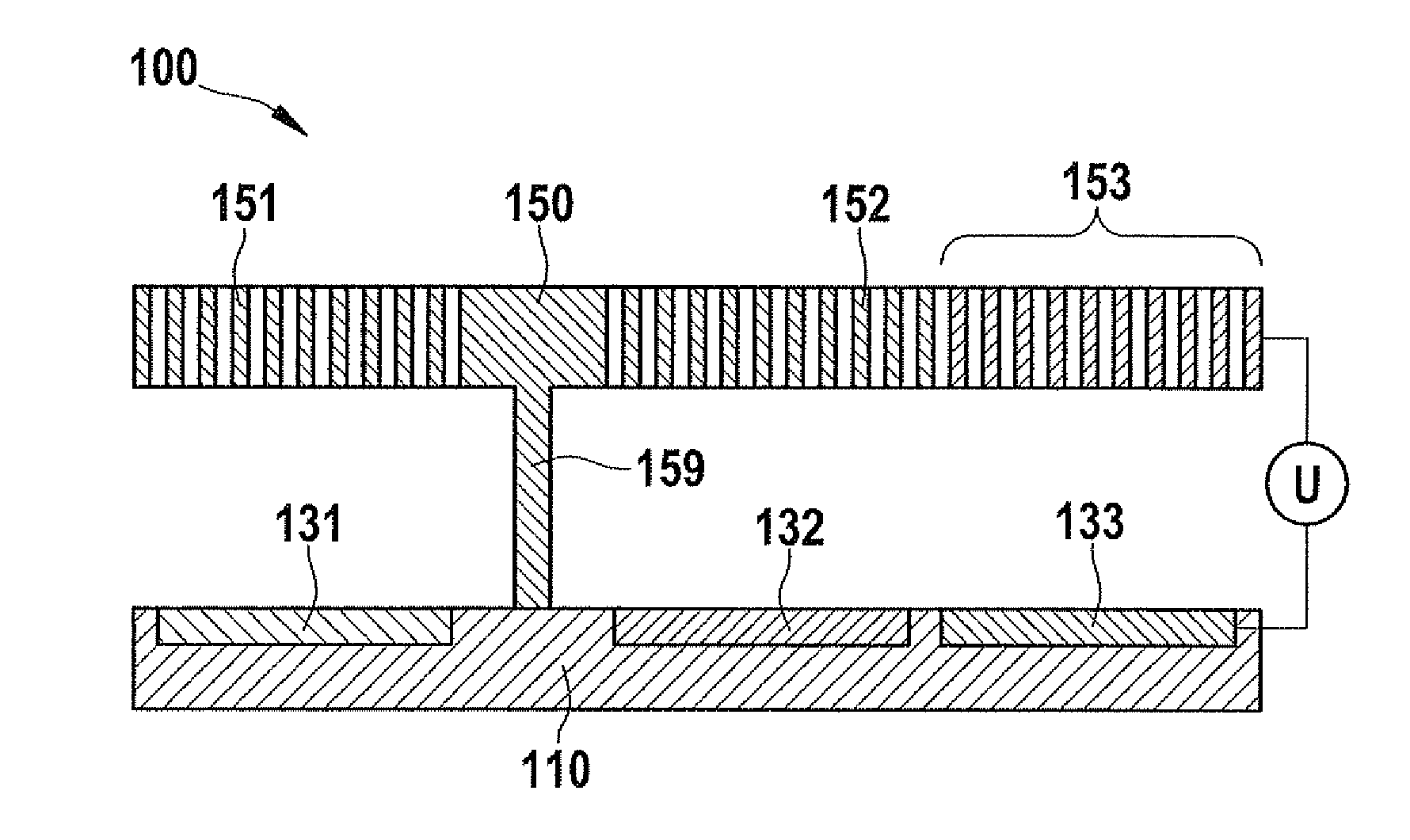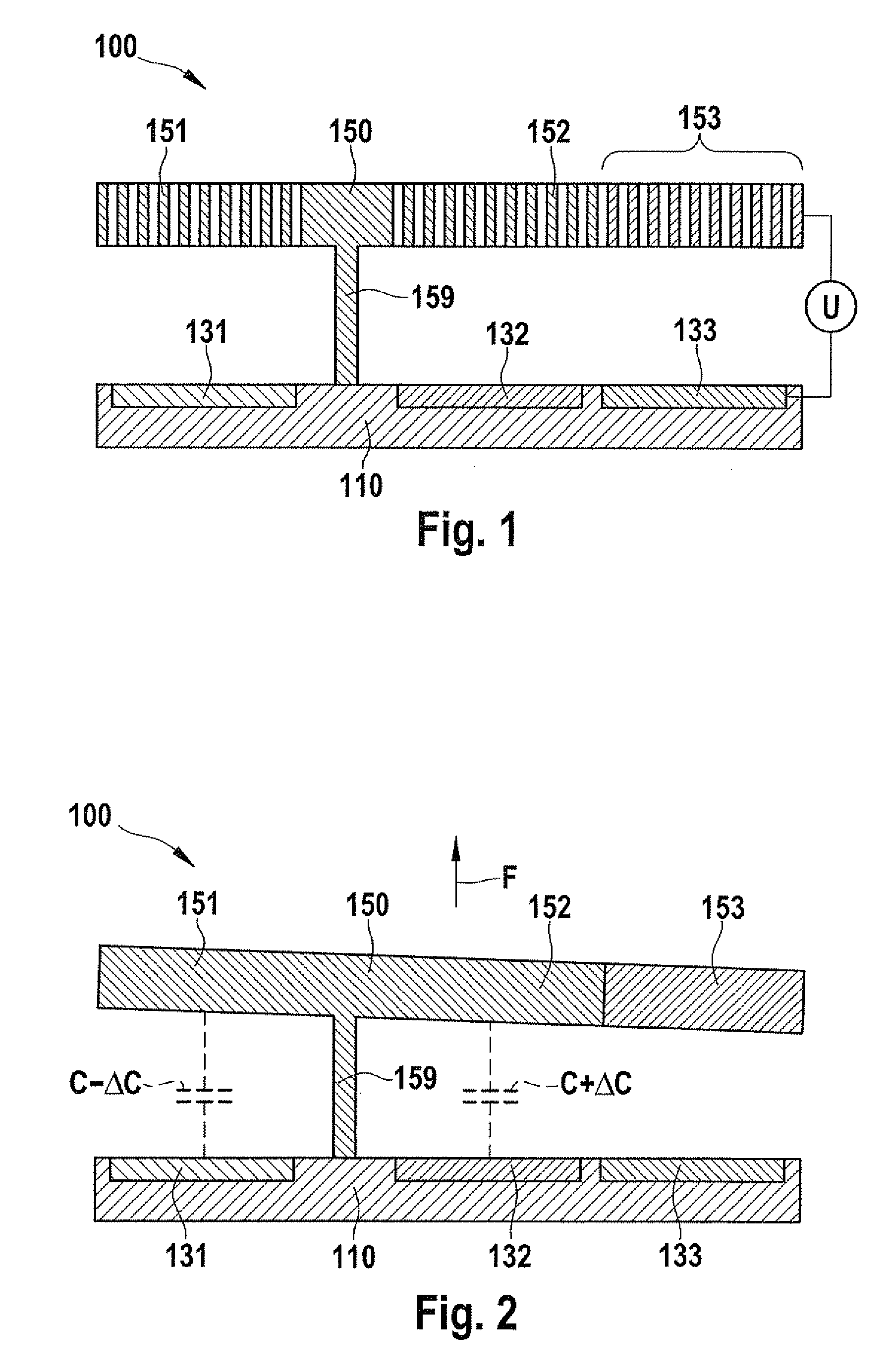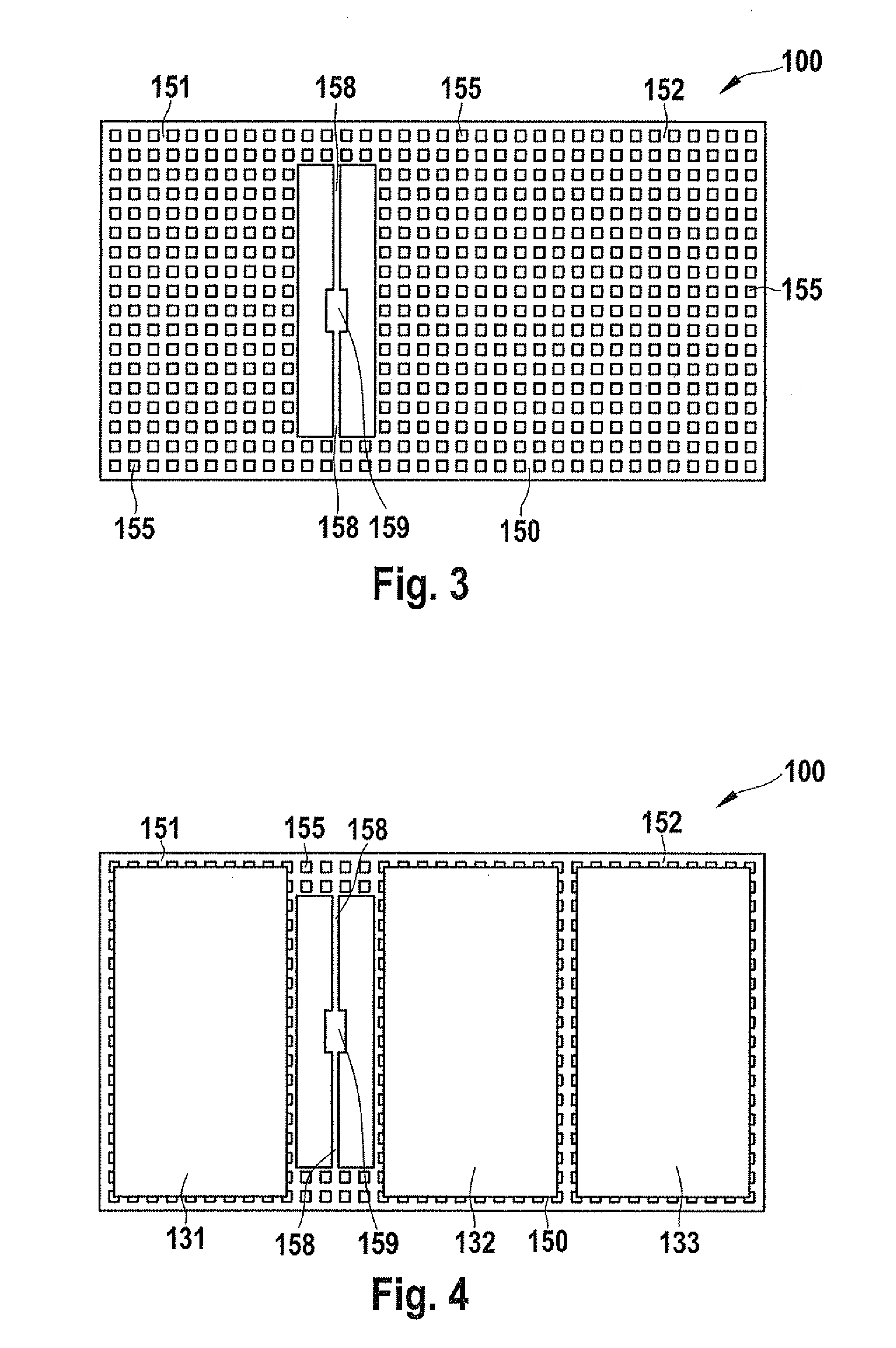Micromechanical component
a micro-mechanical and component technology, applied in the direction of speed/acceleration/shock measurement, measurement devices, instruments, etc., can solve the problems of large problem, increased space requirement, unfavorable overload resistance, etc., and achieve high zero-point stability, negligible space requirement, and overload resistance high
- Summary
- Abstract
- Description
- Claims
- Application Information
AI Technical Summary
Benefits of technology
Problems solved by technology
Method used
Image
Examples
Embodiment Construction
[0029]FIG. 5 shows a top-view illustration of a micromechanical component 200 according to one specific embodiment. Component 200 has a rotatable flywheel mass in the form of a rocker 250 having a first lever arm 251 and a second lever arm 252 whose outer dimensions are identical. A recess is provided between the two lever arms 251, 252, and two torsion bars 258 are disposed inside of it. Torsion bars 258 define an axis of rotation, around which rocker 250 may be rotated. Furthermore, torsion bars 258 are connected to a supporting element 259, via which rocker 250 is connected to an underlying conductive layer 230 of a substrate 210 (FIG. 9). Conductive layer 230 includes a first electrode 231 and second electrode 232 whose lateral position relative to lever arms 251, 252 becomes clear with the aid of FIG. 6. In this instance, first lever arm 251 is situated across from first electrode 231, and second lever arm 252 is situated across from second electrode 232, and they respectively ...
PUM
 Login to View More
Login to View More Abstract
Description
Claims
Application Information
 Login to View More
Login to View More - R&D
- Intellectual Property
- Life Sciences
- Materials
- Tech Scout
- Unparalleled Data Quality
- Higher Quality Content
- 60% Fewer Hallucinations
Browse by: Latest US Patents, China's latest patents, Technical Efficacy Thesaurus, Application Domain, Technology Topic, Popular Technical Reports.
© 2025 PatSnap. All rights reserved.Legal|Privacy policy|Modern Slavery Act Transparency Statement|Sitemap|About US| Contact US: help@patsnap.com



